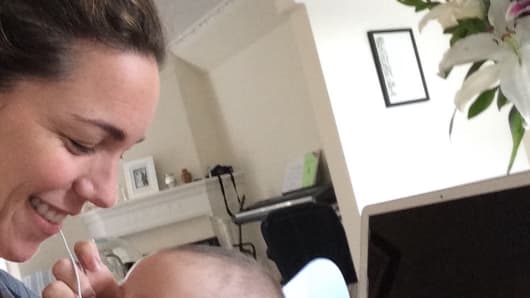Researchers have developed an algorithm that can identify people previously diagnosed with diabetes in Apple Watch heart data. The learning algorithm provides a strong model for identifying people with diabetes but has yet to prove itself against the tougher task of spotting undiagnosed patients without also racking up false positives.
Cardiogram, an Apple Watch app developer, ran the study (PDF) on 14,011 of its users in conjunction with researchers at UCSF.The data is displayed in the article for several states of heart activity After using data on some of the participants to train a deep neural network, called DeepHeart, the team tested the algorithm on results from the remaining cohort of subjects. The best version of the algorithm recorded a c-statistic of 0.85 in diabetes, making it a strong model.
San Francisco-based Cardiogram is able to identify people with diabetes from heart data because of earlier work that spotted a correlation between variability in cardiovascular activity and the condition.
It was not stated whether the . Apple Watch is HIPAA compliant. HIPAA compliance is a federal regulation which requires all personal identifiying information to be scrubbed from data sources. The article did not expand on this issue.
If Apple files for approval of the app, it will mark a major advance in its long-running flirtation with the healthcare sector. The tech giant stepped up its interest in the space with the introduction of Watch in 2015 and rollout of its ResearchKit framework. Talks with the FDA and involvement in its software precertification pilot program followed. But Apple has yet to seek FDA clearance of a device.
In another development:
AliveCor gets first FDA nod for an Apple Watch accessory
AliveCor has gained clearance to sell a medical device accessory for Apple Watch. The regulatory nod covers AliveCor’s KardiaBand, a device that clips onto Apple’s smartwatch and performs EKG readings.
Users of the $199 AliveCor device and accompanying $99-a-year service replace the wristband on their Apple Watch with KardiaBand. Machine learning algorithms, dubbed SmartRhythm, then sift through data gathered by Apple Watch’s sensors to establish a normal band of heart rate activity. If the wearer’s heart rate deviates from these historic norms, the app directs the user to take an EKG.
This is where the band itself comes in. The user places a finger on a sensor built into the strap. The band then performs an EKG, also known as an electrocardiogram, to assess whether the electrical impulses that modulate cardiac contractions are firing properly. The resulting 30-second waveform is shown on the Apple Watch screen, after which the user can share it with their doctor as a PDF.
Aspects of the technology are the same as the credit card-sized device, KardiaMobile, AliveCor already sells for use with smartphones. But the incorporation of the Apple Watch sensors and data into the process stands to change when and why users decide to take an EKG reading.
The big question now is whether this more objective approach to assessing when an EKG is needed will translate into improved outcomes for patients. AliveCor has clinical trial data showing its smartphone-based EKG outperformed routine care. In theory, the Apple Watch-based approach should improve on that product, for the reasons outlined by Topol, but that hypothesis is yet to be tested in the wild.
For the broader digital health sector, the important thing is AliveCor has gained clearance to start finding out how its device performs in the real world at all. AliveCor hustled through the regulatory process far faster in Europe than in the U.S. When AliveCor unveiled the device in March 2016, it talked up the prospect of “late spring” availability. That target came and went as AliveCor grappled with the FDA review process.
Vic Gundotra, the ex-Googler who runs AliveCor, told TechCrunch getting the device to market was “one of the hardest things I’ve ever done in my life.” Under the leadership of Scott Gottlieb, M.D., the FDA may provide an easier route to market for companies that try to follow in AliveCor’s wake. But having put in the hard yards, AliveCor has the field to itself for now.
The FDA process is lengthy and costly for device manufacturers, a barrier for smaller manufacturers. Hopefully this will encourage other ground breaking consumer medical devices to proceed.
Read More On
atrial fibrillation digital health wearables AliveCor Apple Apple Watch Food and Drug Administration (FDA)
http://tinyurl.com/y9vygq9r











